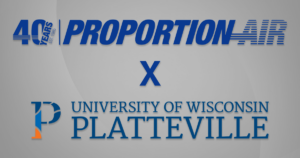Interested in Aerospace
Bringing Exploration Back to America In space exploration, the phrase “what goes up must come down” can pose expensive results; traditionally, rockets split into segments during the launch process, resulting in one part in space and another in the ocean. The issue, therefore, is obvious: with the total cost to create, build, and assemble the rocket, much of it is reduced to unusable metal.
Recently, however, outward-facing innovation, driven by Tesla founder and CEO Elon Musk through his work at SpaceX, has lead to a revitalization in interest in space exploration. With videos of its rocket launches garnering media attention and millions of views, SpaceX has brought space exploration back into the mainstream by bringing its biggest news—and its most promising future—to America.
Reusable Rockets
To combat the cost of building rockets from scratch each time one is launched, SpaceX has been working to develop reusable rocket technology since 2011. From the beginning, the idea has been simple: develop a reusable orbital class booster, which Musk describes as “the most expensive part of the rocket,” that will launch, help deliver cargo, and then return to a landing pad. Of course, while the idea was simple, the execution was anything but.
After four years of development, 2015 brought a big success for SpaceX. On December 21, SpaceX landed the Falcon 9’s orbital class booster, a first for the aerospace industry. It was a historic moment with present implications, too—not only did the company achieve its goal, but it also was able to launch 11 satellites in the process.
Through continued testing, SpaceX looked well on its way to making a routine out of rocket landings; however, on September 1, 2016, the company suffered a major setback. During the preparation test of another Falcon 9, the rocket exploded on the launchpad, creating a degrading scene of metal pieces and fire. The failure became massive news, with critics questioning SpaceX’s future as well as Musk’s vision.
It wasn’t long, though, before SpaceX was back, this time attempting another first: reusing a Falcon 9. Earlier this year, SpaceX launched and returned the first stage of an old Falcon 9, truly solidifying the concept of reusing rockets.
The accomplishment received deserved media praise, exciting both casual and more hardcore space fans. For Musk, it was a success much needed, silencing doubters who doubted his company’s potential success.
SpaceX: Made in America
SpaceX’s success is the latest American-driven space accomplishment, but one that comes after years without NASA shuttle launches. With headquarters in California, offices around the country, a development center in Texas, and suppliers around the United States, SpaceX has become an American success story that the country can rally behind. The company’s future is looking up, and its wins are the U.S.’s wins. With the company’s future looking bright, it’s looking like space travel is back—this time, in the United States.

 Purdue’s Mechanical Megalodon Senior Capstone Project Taking Shape
Purdue’s Mechanical Megalodon Senior Capstone Project Taking Shape  University of Wisconsin & Proportion-Air – Manual Regulator Senior Capstone Project Team
University of Wisconsin & Proportion-Air – Manual Regulator Senior Capstone Project Team  February Newsletter: Medical Device Manufacturing
February Newsletter: Medical Device Manufacturing